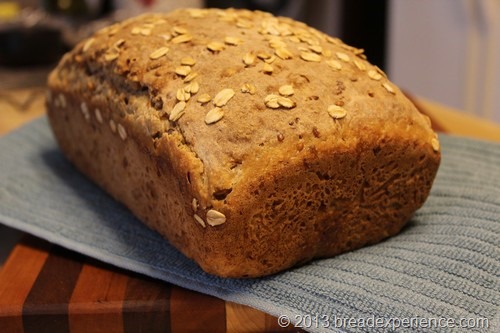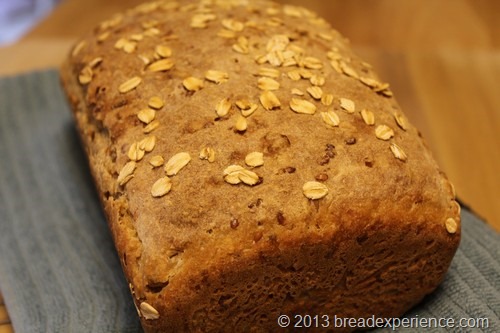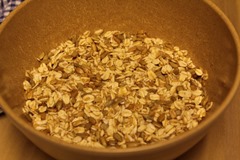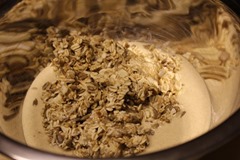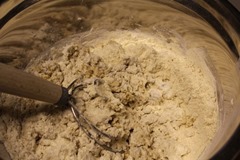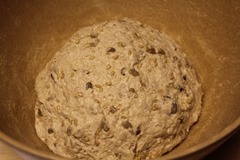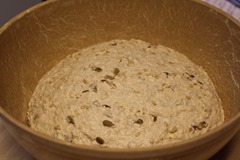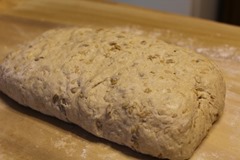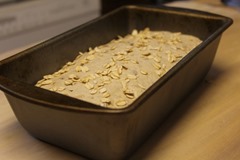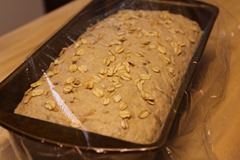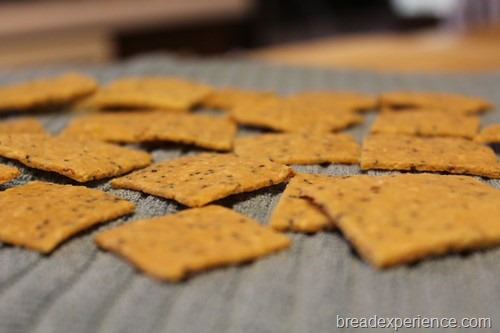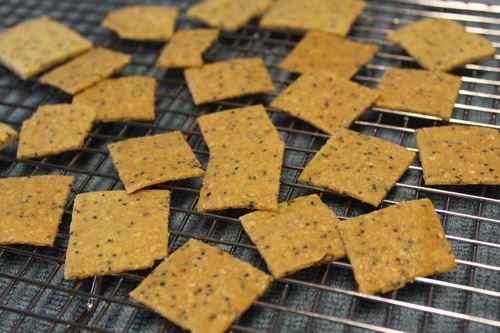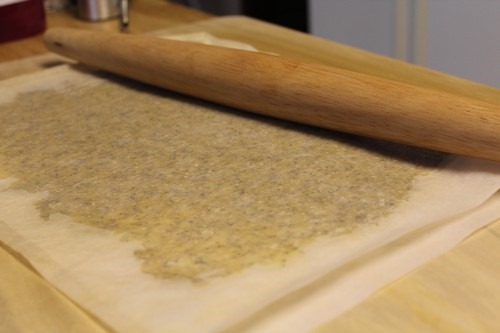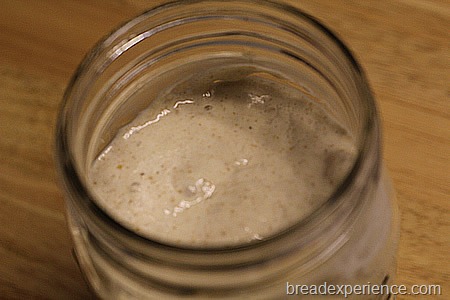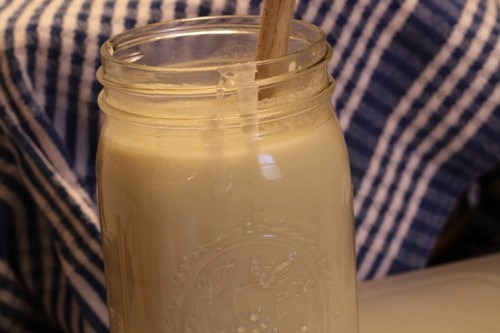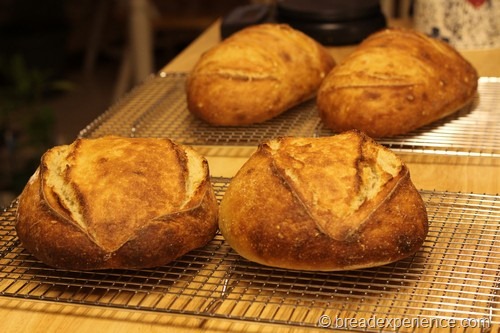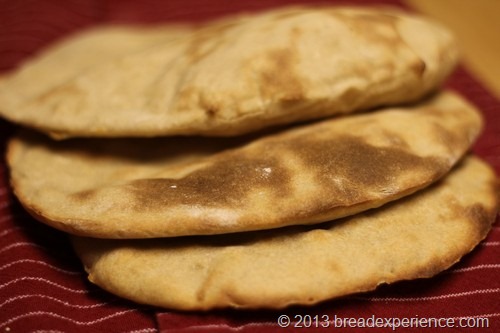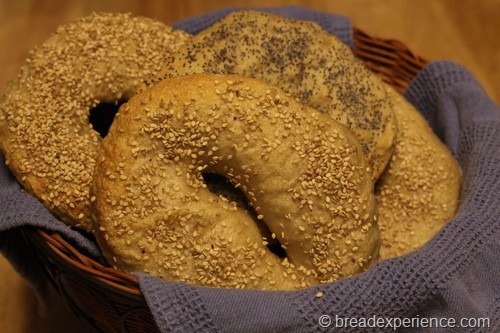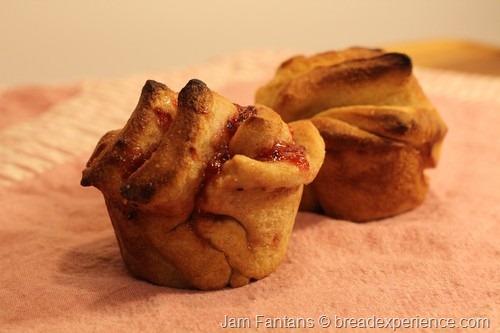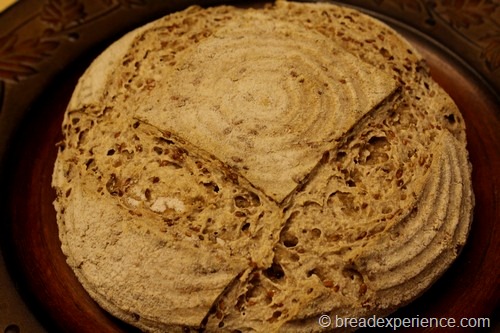The bread of the month for the Artisan Bread Bakers’ Facebook group is a Multigrain Bread. The original recipe, from Pastry Affair, makes a simple multigrain bread using the straight dough method. With the straight dough method, the bread is made without any preferment.
I changed things up a bit by incorporating an overnight soaker to soften the grains and a sourdough starter to ferment the dough. I used white Spelt flour instead of bread flour, Einkorn flour instead of regular whole wheat flour and my EK (Einkorn) sourdough starter. I also added a little bit of honey to sweeten the pot.
Due to the inclusion of the sourdough and ancient grains, what I ended up with was a completely different multigrain bread; full of nutrients and fiber and easier on the digestive tract.
I used my Einkorn starter for this recipe. I had just fed all of my starters, but I used the Spelt and apple starters to make sourdough crackers. The only starter I hadn’t used yet was the Einkorn starter so in the pot it went. A Spelt starter would also work well in this bread or you could use a starter made from white bread flour if you want to make it with regular wheat rather than ancient grains.
Sourdough Multigrain Bread with Ancient Grains & Overnight Soaker
Inspired by this Multigrain Bread from Pastry Affair
Makes: 1 Loaf
Ingredients:
Multigrain Soaker:
- 1 cup old fashioned oats
- 1/2 cup roasted sunflower seeds
- 2 tablespoons flax seeds
- 10 ounces tepid water
Final Dough:
- 1 cup sourdough starter (I used this Einkorn Levain)
- 2 cups white Spelt flour
- 1/2 cup whole grain Einkorn flour
- 1/2 teaspoons instant yeast*
- 1 1/2 teaspoons salt
- ~2 ounces lukewarm water (you might need more or less water, depending on whether you use a liquid or stiff starter)
- Additional oats (and/or seeds) for garnish
* Due to the inclusion of the multigrain soaker, I added a little bit of yeast to help give some lift to the dough.
Directions:
1) Make the Multigrain Soaker
The night before you plan to make this bread, place the oats, sunflower seeds and flax seeds in a small bowl and cover them with the water. Cover the bowl with plastic wrap or a kitchen towel and let it sit overnight.
2) Mix the Dough
The next day, whisk together the Spelt and Einkorn flours, salt and yeast in a medium bowl and set aside. In a large bowl or in the bowl of your stand mixer, add the multigrain soaker and sourdough starter.
Gradually add the dry ingredients to the wet ingredients and stir with a wooden spoon, Danish dough whisk or mix on low speed on the mixer. Add the water and mix until the dough pulls away from the sides of the bowl. If the dough is too dry, add a little more water, or if it is too sticky, sprinkle a little more flour until it becomes a workable dough.
3) Knead the Dough
Remove the dough to a lightly floured surface and knead it gently. It’s easy to over knead Spelt so I only kneaded it for a short time, then I put it in a lightly greased bowl.
4) Bulk Fermentation
Cover the dough with plastic wrap or a kitchen towel and let the dough proof in a warm spot (about 70 degrees F.) for 3-4 hours. Fold the dough a couple of times during the first hour to help develop the gluten.
5) Shape the Loaf
At the end of the bulk fermentation, gently punch down the dough and let it rest in the bowl for 10 minutes. Remove the dough to a lightly floured work surface. Shape the dough into a rough rectangle.
Fold the top third down and the bottom third up and gently press the edges together.
Place the loaf seam-side down in a greased 9 x 5-inch loaf pan. Using a spray bottle, spritz the top of the loaf with water and sprinkle with oats (and more seeds if you like).
6) Final Proof
Cover the loaf with plastic wrap or a kitchen towel and let it proof for another 30-40 minutes, or until it doubles in volume.
7) Bake the Loaf
Preheat the oven to 375 degrees F. Bake the loaf for 40-50 minutes, or until the top is lightly browned and the bottom of the loaf sounds hollow when thumped.
8) Cool and slice the loaf
Remove the loaf from the oven and immediately remove it from the pan to a wire rack to cool completely before slicing and serving.
This bread makes a good sandwich bread. I enjoyed it toasted with cheese and with peanut butter and jelly.
Happy baking!
Cathy
